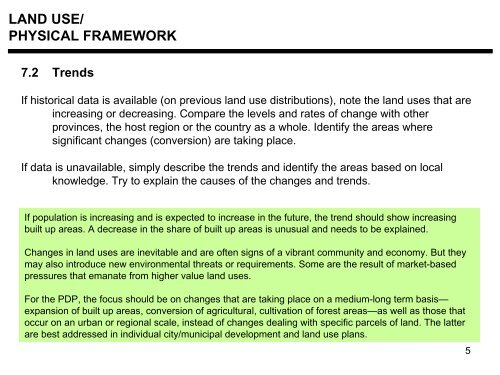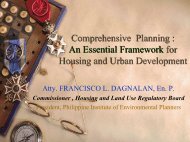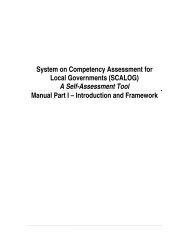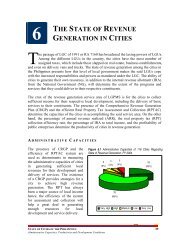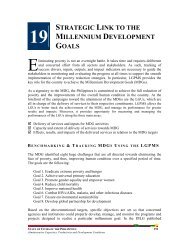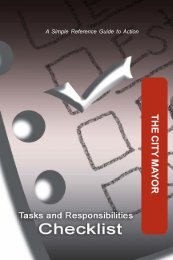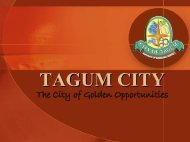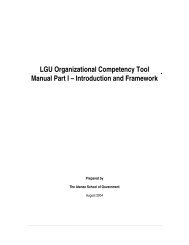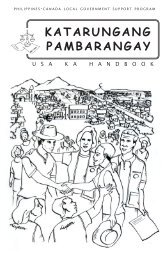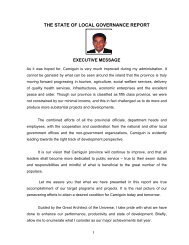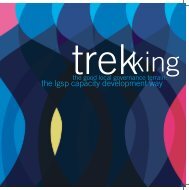LandUse - LGRC DILG 10
LandUse - LGRC DILG 10
LandUse - LGRC DILG 10
Create successful ePaper yourself
Turn your PDF publications into a flip-book with our unique Google optimized e-Paper software.
LAND USE/<br />
PHYSICAL FRAMEWORK<br />
7.2 Trends<br />
If historical data is available (on previous land use distributions), note the land uses that are<br />
increasing or decreasing. Compare the levels and rates of change with other<br />
provinces, the host region or the country as a whole. Identify the areas where<br />
significant changes (conversion) are taking place.<br />
If data is unavailable, simply describe the trends and identify the areas based on local<br />
knowledge. Try to explain the causes of the changes and trends.<br />
If population is increasing and is expected to increase in the future, the trend should show increasing<br />
built up areas. A decrease in the share of built up areas is unusual and needs to be explained.<br />
Changes in land uses are inevitable and are often signs of a vibrant community and economy. But they<br />
may also introduce new environmental threats or requirements. Some are the result of market-based<br />
pressures that emanate from higher value land uses.<br />
For the PDP, the focus should be on changes that are taking place on a medium-long term basis—<br />
expansion of built up areas, conversion of agricultural, cultivation of forest areas—as well as those that<br />
occur on an urban or regional scale, instead of changes dealing with specific parcels of land. The latter<br />
are best addressed in individual city/municipal development and land use plans.<br />
5


